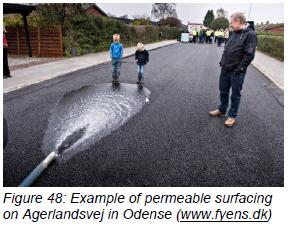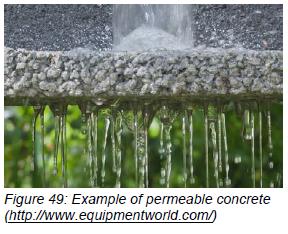The majority of drainage infrastructure in Denmark consists of joint sewage.
This solution has shown that it is not geared to the current amount of drainage volumes; where large, densely populated towns and cities are especially challenged.
Sustainable Urban Drainage Systems (SUDS) are increasingly applied, however, can be difficult to apply in dense urban environments.
Another challenging problem with SUDS solutions, including permeable surfacing, is how potential contamination is managed and how to ensure that the systems is operational now and in the future.
In an attempt to solve these challenges this action will carry out a number of trials on permeable coating called the climate road. This action is primarily linked to tools and innovation within rainwater.
Main responsible beneficiary: Hedensted Municipality
Number of days estimated spent on action in phase 1: 250 Days
Budget: 359.547€
Beneficiary responsible for implementation: VIA University College (VIA) and Hedensted Municipality (HEDKOM) are project managers. The action is relevant for all C2C CC partners who will attend knowledge sharing activities in action C4 and C5.
Role of Hedensted Municipality: is responsible for providing advice, authorities processing and contact to the stakeholders.
Role of VIA University College: VIA is responsible for the progress in the project, the construction phase, monitoring, data processing and reporting about the project.
Relation to Climate Change Adaption plans
The action is a consequence of several of the C2C CC partners’ CCA plans, which aim to prevent the consequences of climate change by using increased infiltration in permeable coatings.


